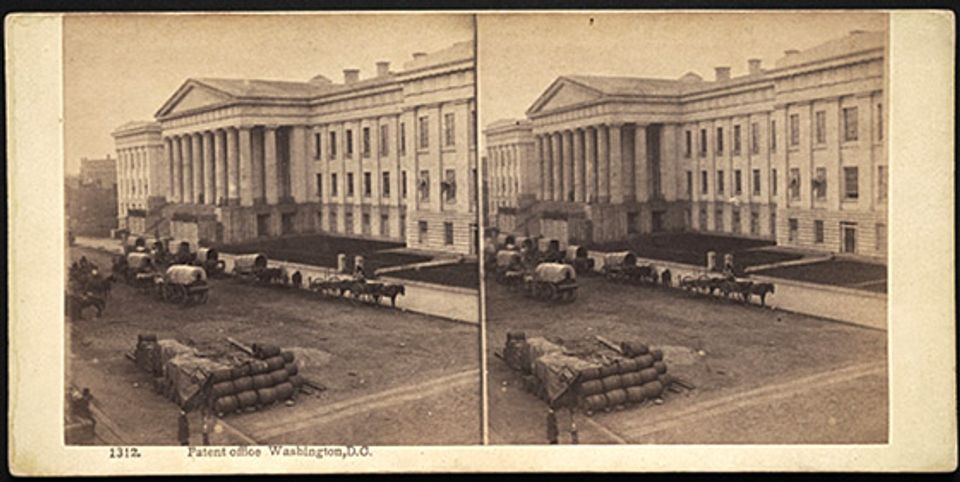

April is National Poetry Month. With The Civil War and American Art on view at the museum through April 28, I thought it was a good time to bring Walt Whitman into the conversation. In the exhibition we've seen artists grapple with the theme of war, its consequences, and its aftermath, but writers paint pictures in different ways. Whitman, who was a nurse during the Civil War could be found in the makeshift hospital at the Patent Office Building ("the noblest of Washington buildings"), what is now American Art and the National Portrait Gallery. Whitman's groundbreaking poetry still sings today. His elegy for President Lincoln, When Lilacs Last in the Door-yard Bloom'd is one of the strongest poems ever written to honor a slain leader. Here, I've taken a selection from his prose work, Specimen Days, where Whitman describes the contrast between the wounded soldiers and the grand building that held cases of patent models (even President Lincoln had a model in the collection). I admire Whitman's clean, concise prose and his ability to tell a story—and paint a picture—with words:
February 23. —I MUST not let the great hospital at the Patent-office pass away without some mention. A few weeks ago the vast area of the second story of that noblest of Washington buildings was crowded close with rows of sick, badly wounded and dying soldiers. They were placed in three very large apartments. I went there many times. It was a strange, solemn, and, with all its features of suffering and death, a sort of fascinating sight. I go sometimes at night to soothe and relieve particular cases. Two of the immense apartments are fill'd with high and ponderous glass cases, crowded with models in miniature of every kind of utensil, machine or invention, it ever enter'd into the mind of man to conceive; and with curiosities and foreign presents. Between these cases are lateral openings, perhaps eight feet wide and quite deep, and in these were placed the sick, besides a great long double row of them up and down through the middle of the hall. Many of them were very bad cases, wounds and amputations. Then there was a gallery running above the hall in which there were beds also. It was, indeed, a curious scene, especially at night when lit up. The glass cases, the beds, the forms lying there, the gallery above, and the marble pavement under foot--the suffering, and the fortitude to bear it in various degrees--occasionally, from some, the groan that could not be repress'd--sometimes a poor fellow dying, with emaciated face and glassy eye, the nurse by his side, the doctor also there, but no friend, no relative--such were the sights but lately in the Patent-office. (The wounded have since been removed from there, and it is now vacant again.)
The Patent Office Building served as a hospital for part of the Civil War. In addition to Walt Whitman, American Red Cross founder Clara Barton worked there as a volunteer nurse. In 1865, the building was the site of President Lincoln's second inaugural ball.

















